By Emmaline Ellis, Laurie Esposito, and Jennifer SlagusIn response to an increase in attempts to ban and challenge various children’s and young adult books, the topic of this year’s Children’s Literature Assembly Student Committee (CLA-SC) Annual Student Webinar was “Book Bans: Who, How, and Why?” As a committee with diverse experiences, interests, and roles in the field of children’s literature, the CLA-SC members find these movements to be particularly concerning, as the targeted books are often those that feature characters who are LGBTQIA+, Black, or Hispanic. While some book challenges have received pushback, many others have been successful. These decisions made us wonder - how do books become banned? What is the reasoning supporting these bans? And, who are the decision-makers behind book bans? These burning questions were the guiding focus of this year’s CLA-SC Student Webinar. In order to learn more about the decision-making processes behind book bans, we enlisted the expertise of four esteemed panelists, all of whom are CLA Committee or Board Members. In this post, we summarize and highlight each panelists’ professional or personal experiences and insight as they relate to book bans, and conclude by sharing the informative and helpful resources shared throughout the Webinar. CLA Members can access a video recording of the webinar within the members-only section of the CLA website. Dr. Rachel Skrlac Lo
Our first panelist shared the story of a book challenge in her suburban Philadelphia school district. Dr. Rachel Skrlac Lo, Assistant Professor of Education at Villanova University and parent of a child in the district, described the district’s response when a fellow parent challenged Maia Kobabe’s Gender Queer. In violation of its own protocol, the district removed the book from the high school library pending review by an anonymous ad hoc committee. Various district stakeholders justified the challenge with concerns about potentially harmful psychological effects and age appropriateness. Dr. Skrlac Lo countered these unsubstantiated concerns with empirical data on the harm under-representation in schools causes LGBTQIA+ youth. Although Gender Queer was ultimately returned to the library’s shelves in June 2022, Dr. Skrlac Lo pointed out that a single complaint rendered the book inaccessible to all students for nearly an entire academic year. In concluding her presentation, Dr. Skrlac Lo focused on ways in which we can act against book challenges and bans in schools. She encouraged us to share our expertise through engagement in public discourse. For example, we could join community groups, attend committee meetings, write to legislators, and write op-ed pieces for local publications. Perhaps most importantly, she urged us to “resist and push against” deficit narratives as we listen to and support members of groups targeted by censorship efforts. Breakout Quote for Dr. Skrlac Lo: |
| Regarded as The Rebel Nun, the Pop Art Nun, and Andy Warhol's Kindred Spirit, Sister Corita Kent (1918–1986) was a member of the Immaculate Heart Community of Los Angeles, California. She created multimodal art prints that were social commentaries on poverty, injustice, and war. As the artist of "The Rainbow Swash" (1971), the largest copyrighted rainbow in the world, and the designer of US Postal Service's best selling "Love Stamp” (1985), Sister Corita also used her art and her voice to promote the kind of hope, love, and kindness that overcomes barriers and unites people. In the highly acclaimed picturebook biography Make Meatballs Sing: The Life and Art of Corita Kent (2021, Enchanted Lion Books), author Matthew Burgess and illustrator Kara Kramer engage readers in a multimodal exploration of an extraordinary person’s life and legacy that resulted in nearly “800 serigraph editions, thousands of watercolors, and innumerable public and private commissions” according to The Corita Art Center of Los Angeles, CA. Learn more about Corita Kent at: www.corita.org. The Biography Clearinghouse entry for Make Meatballs Sing includes and interview with Matthew Burgess and several recommendations for working with the book. Below is an excerpt of the teaching ideas in the entry. |
Using Viewfinders
If you have 1 - 2 hoursMake and Use Viewfinders Invite students to make viewfinders, like those Sister Corita Kent asked her students to create, from everyday materials like recycled cardboard, heavy paper, or cardstock. Encourage students to use their finders to examine things in their classrooms, schools, homes, neighborhoods, and other venues. Take a walking field trip in the vicinity of the school to take a closer look and find unexpected surprises. After returning to the classroom, invite students to write about what they noticed and to discuss their experiences in looking and seeing in a different way. |
If you have 1 - 2 daysDevelop a Scavenger Hunt Invite students to develop a scavenger hunt for another looking tour. Welcome them to generate ideas for their types of objects, shapes, attributes, or other elements they should look on the tour. For example, students might search for things that are green, billowy, jagged, smooth, angular, etc. Encourage students to bring a sketchbook to capture the images they find during the scavenger hunt. Alternatively, they could use digital cameras to document their findings. Upon returning to the classroom, encourage students to identify their favorite "find" from the hunt and to contribute it to a class collage. Students could collaborate in the creation of a visual patchwork akin with the art collage that appears on the back jacket of Make Meatballs Sing. |
If you have 1 - 2 weeksCreate a Multimodal Composition for Screen Painting
Invite students to use their findings from their scavenger hunts to create multimodal compositions that incorporate images and texts. Present an array of Sister Corita’s prints as models. Encourage students to incorporate epigraphs or quotes from texts that are meaningful to them. Alternatively and/or additionally, invite students to create images based on their looking exercises that could be used for a simple screen painting project. Several resources are available online for creating serigraphy with students. Here is one approach that uses embroidery frames. |
By Erika Thulin Dawes and Xenia Hadjioannou on behalf of the Biography Clearinghouse
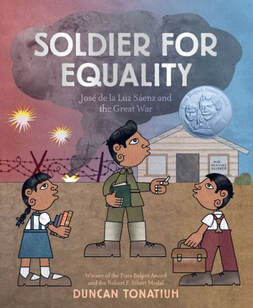
Toniatiuh’s biography of José de la Luz Sáenz is a powerful narrative of the transformative power of literacy. Luz’s education and multilingualism were instrumental in his life trajectory; his knowledge allowed him to navigate the battlefield safely, keeping him out of the trenches and instead in a fortified command post for the intelligence service. He developed his skills in organizing while teaching English to Mexican American soldiers. And upon his return to teaching when the war was over, he turned his outrage over unequal schooling for Mexican American children into activism, establishing the League of United Latin American Citizens (LULAC), an organization that helped to end the segregation of Latinx children from white schools.
In our Biography Clearinghouse entry, we provide an interview with Duncan Tonatiuh and a collection of teaching ideas to support student exploration of Soldier for Equality. These teaching ideas encourage students to consider the transformative power of literacy and the generative power of community organizing and activism. They include: an exploration of translanguaging and theme development in picturebooks; a history of and contemporary look at the experience of minoritized populations in the United States army; a call to allyship to counter bullying; a visual literacy exercise exploring traditional artistic motifs; and a tribute to teacher activists.
Below is an excerpt of the teaching ideas in the Biography Clearinghouse entry for Soldier for Equality: José de la Luz Sáenz and the Great War:
Social Justice Concerns in Personal Lives and Society
Throughout his life, Luz identified injustices levied against Mexican Americans, and engaged in purposeful actions to work against these injustices and promote equity. In Soldier for Equality, readers encounter several instances of prejudice and discrimination against Luz, because of his status as a Mexican American. Readers also get to see purposeful actions Luz is taking to fight against these injustices. As a class, create parallel lists of (a) instances of prejudicial treatment Luz encountered and (b) purposeful actions he took to work against those injustices and bring about equality and fair treatment.
|
RECENT ENTRIES
|
Teachers as Activists
If you have two hours… |
If you have two days… |
If you have two weeks… |
Read or reread Soldier for Equality: José de la Luz Sáenz and the Great War and ask students to make note of the meaning that education, language, and reading and writing had in his life. Record students' thoughts on a two column chart with one column labeled ‘claims’ and the second column labeled ‘evidence from the book.’ Next, pair students up, asking students to interview each other about the roles of language and literacy in their lives. Prior to conducting the interviews, brainstorm a list of questions to ask. Questions could include:
|
The text set outlined below features the life stories of teachers who also served as activists. Divide students into small groups, each group responsible for reading one of the picturebooks listed below.
Provide each group with a graphic organizer on which to record notes about the subject of their biography. Students can record: the name, birth, and death dates of their subject; where their subject lived and worked; key achievements of their subject; challenges faced by their subject; beliefs about education held by their subject. To share their learning about these teacher activists with their classmates, ask each group to create and perform a monologue in the voice of their subject. The monologue should highlight the information captured in their graphic organizers. |
As an extension of the text set exploration of teacher activists, engage students in a discussion of all the people that serve as teachers in their lives. In which settings do they learn beyond school? Who are the people who mentor, guide, and teach them in all the realms of their lives? Invite students to consider what they could compose, create, or make to honor and celebrate their teachers. Possible projects could include:
|
Citations
Cowie, H., & Myers, C. (2021). The impact of the COVID‐19 pandemic on the mental health and well‐being of children and young people. Children & Society, 35(1), 62-74. https://doi.org/10.1111/chso.12430
Samji, H., Wu, J., Ladak, A., Vossen, C., Stewart, E., Dove, N., Long, D., & Snell, G. (2022). Review: Mental health impacts of the COVID‐19 pandemic on children and youth – a systematic review. Child and Adolescent Mental Health, 27(2), 173-189. https://doi.org/10.1111/camh.12501
Xenia Hadjioannou is an Associate Professor of Language and Literacy Education at the Harrisburg campus of Penn State University where she teaches and works with pre- and in-service teachers through various courses in language and literacy methodology. She is the Vice President and Website Manager of the Children's Literature Assembly, and a co-editor of The CLA Blog.
The Bonnie Campbell Hill National Literacy Leader Award
Call for Applications
by Oksana Lushchevska
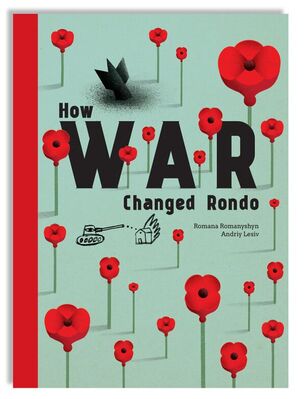
Following the horrific news from Ukraine, an independent, rapidly developing country located in eastern Europe, US educators and literature advocates seek tools to facilitate starting conversations about the devastating effects of war on humanity and the support every individual can offer, regardless of where they are.
Children’s books can serve as a great tool to start deliberate, responsible conversations through classroom dialogue. Jella Lepman (1891-1970), a German journalist, author, and translator who founded the International Youth Library in Munich right after WWII, believed that children’s books are couriers of peace. She was certain that if children read books from other countries, they would realize that they share common human values and strive to preserve them.
I believe that we, as global-minded educators and literature advocates, should, to use Scurfield and Platoni’s words, become warriors of peace; peacemakers who prepare our children to grow into wise, understanding, and sympathetic global citizens who have the will and the capacity to heal the world. Being originally from Ukraine and witnessing this horrific war unfolding in my country, where all my family and friends live, I feel the cruciality of this duty urgently and viscerally. Thus, I want to bring to your attention the picturebook How War Changed Rondo, which is a Ukrainian export. The book has been recognized as a Kirkus Best Book of 2021 and as a USBBY Outstanding International Book of 2022.
Interestingly, this book was created by the Ukrainian book creators Romana Romanyshyn and Andriy Lesiv in 2014. The book won the 2015 Bologna Ragazzi Award, which is one of the most prestigious European Awards in children’s literature. I translated this book as soon as it was written. It was an imperative for me to bring it to the attention of English-speaking readers as it highlights a vital turning point in Ukraine's independent history: Russia’s annexation of Crimea and occupation of the eastern part of Ukraine in 2014 (Ukraine has been an independent country since the Soviet Union collapsed in 1991). I also felt responsibility to share with global young readers that we, as human beings, all want peace and democracy; we want to create and to thrive. In the picturebook, through the fictionalized characters, Danko (a light bulb), Fabian (a pink balloon dog), and Zirka (an origami bird), Romanyshyn and Lesiv depict the horrors of invasion of one’s own country, the impact of war, and the destruction in brings to everyone.
|
In wrapping up, I wanted to leave you with some insights from the experiences of the Ukrainian people faced with the recent events. Children are not afraid to talk about serious topics. In fact, they are willing and eager to do it. While many of my Ukrainian colleagues are hiding in bomb shelters, they seek children’s books to soothe their children through the difficulties and hardship. Ukrainian publishers have distributed free digital copies of contemporary Ukrainian children’s books, some of which are books about peace and war. In this way, children can choose what they want to read and talk about. Some of them ask to read about peace to strengthen their hope. Others ask to read about war to have the possibility for catharsis.
Ukrainian Publishers and Literary Agencies Participating in the Free Book Initiative
While Ukraine is going through this terrible experience, we here in the USA have a responsibility to help our young readers to grow into empathetic adults who will definitely create better, life-altering history for humanity to avoid tragedies such as this. In addition, I want to invite all US publishers to seek out contemporary Ukrainian books, especially books that might portray a unique perspective on the subject of war, tyranny, and shared human values. I suspect that there will be a lot of books soon, as many writers, myself included, are writing down their experiences to create a solid piece of history for the future generations. Such books can keep us accountable to the past, inspire endless possibilities of anti-war art such as the Never Again War poster created by Käthe Kollwitz in 1924, and guide us to do our best to prevent wars and create a bright hopeful future.
|
Translated from Ukrainian and readily available in the United States:
Picturebooks:
How Many? (By Halyna Kyrpa and illustrated by Olha Havrylova. Translated by Oksana Lushchevska. Bratske Publishers, 2014. Kindle Edition.)
Mr. Catsky, Mira, and the Sea (By Oksana Lushchevska and illustrated by Violetta Borigard. Bratske Publishers, 2015. Kindle Edition.) And more from the team of Romana Romanyshyn and Andriy Lesiv: Sound: Shh…Bang…Pop…BOOM! (Chronicle Books, 2021) Sight: Glimmer, Glow, Spark, Flash! (Chronicle Books, 2020) Stars and Poppy Seeds (Tate, 2019) Loudly, Softly, in a Whisper (Wonder House Books, 2017) I See That (Wonder House Books, 2017) Chapter Books and Longer Books:
Letters on the War: Children Write to Soldiers (Edited by Valentyna Vzdulska, Oksana Oksana, Julia Berezenko, and illustrated by Olena Staranchuk. Translated by Oksana Lushchevska and Michale Naydan. Bratske Publishers, 2015. Kindle Edition.)
Heart in Flames: Tales of Action and Intrigue (By Antaoly Koetesky and illustrated by Olexandr Zastanchenko. Translated by Oles Kovalenko and Vasil Baryshev. Dnipro Publishers, 1990.) Set in Ukraine or Related to Ukraine:
Picturebooks:
The Mitten (By Jan Brett. Putnam’s Sons, 2009.)
The Mitten (By Alvin Tresselt and illustrated by Yaroslava. HarperCollins, 1989.) The Birds' Gift: A Ukrainian Easter Story (Retold by Eric A. Kimmel and Illustrated by Katya Krenina. Holiday, 1999.) The Spider's Gift: A Ukrainian Christmas Story (Retold by Eric A. Kimmel and Illustrated by Katya Krenina. Holiday, 2010.) Chapter Books and Longer Books:
Alias Anna: A True Story of Outwitting the Nazis (By Susan Hood with Greg Dawson. HarperCollins, 2022.)
The Midnight Zoo (By Sonya Harnett. Candlewick, 2011.) The Blackbird Girls (By Anne Blankman. Puffin (Reprint Edition), 2021.) The Winter Horses (By Philip Kerr. Knopf, 2014.) My Real Name is Hanna (By Tara Lynn Masih, 2018.) Radiant Girl (By Andrea White, Black Spot Books, 2018.) The Secret of Priest's Grotto: A Holocaust Survival Story (By Peter Lane Taylor & Christos Nicola, Kar-Ben, 2007.) |
Donating to Help
-
Polish Literacy Foundation: Raising funds to buy books for refugee children from Ukraine (and support Ukrainian publishers at the same time)
- For details, you can read Joanne O'Sullivan's article on Publishers Weekly: Polish Literacy Foundation Leads Relief Efforts for Ukrainian Kids
- For details, you can read Joanne O'Sullivan's article on Publishers Weekly: Polish Literacy Foundation Leads Relief Efforts for Ukrainian Kids
-
Ukrainian Red Cross: They organize educational services, provide sanitary materials and coordinate blood donations.
- UNICEF: They provide medical aid, food, and psychological support to children.
-
Voices of Children: They provide psychological services to Ukrainian children impacted by armed conflict. You may be interested intheir digital storytelling project.
- International Rescue Committee: The IRC provides food, medical care and emergency support services to refugee families in several countries, including Ukraine.
- Come Back Alive: They provide assistance to around 100 combat units of the Ukrainian armed forces to cover the real-time needs of defending Ukraine.
- ArmySOS: They provide support to the Ukrainian army.
- Future Ukraine Fund: They support the most vulnerable children in Ukraine. Currently they provide assistance to the Ohmadit Children’s Hospital in Kyiv that cares for children and mothers affected by the war.
- Help Ukraine Win: They are fundraising to provide essential supplies to Ukrainian people who fight against Russian aggression on the front line.
Lepman, J. (2002). A bridge of children’s books: the inspiring autobiography of a remarkable woman. Dublin, Ireland: The O’Brien Press, Ltd.
Romanyshyn, R., Lesiv A., How War Changed Rondo. New York: Enchanted Lion Books.
Scurfield, R. M., Platoni, K. Th. (2012). Healing War Trauma: A Handbook of Creative Approaches. New York: Routledge.
Website: http://www.lushchevska.com
By Mary Ann Cappiello and Jenn Sanders, on behalf of The Biography Clearinghouse
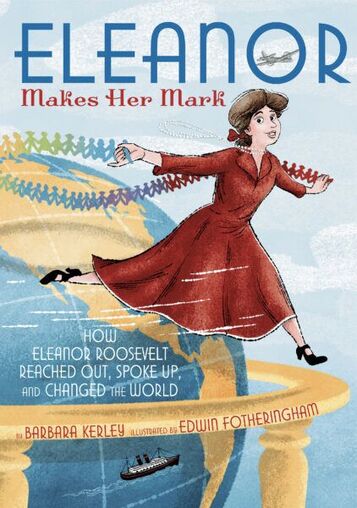
Throughout the book, illustrator Edwin Fotheringam works with visual metaphors to emphasize Eleanor’s unflagging energy and her ability to bring people together. In the cover illustration, Eleanor jumps off of a globe, streaming a banner of paper dolls holding hands that trails in her wake. Fotheringham peppers the book with swirling lines of motion, highlighting Eleanor’s boundless verve, vivacity, and constant travel. Fotheringham also continues the hand-holding motif throughout the book to reinforce the ways in which Eleanor Roosevelt brought people together and made them feel seen, heard, and respected. Paper dolls thread through the backgrounds, and Eleanor is often depicted holding hands or connected to the people with whom she is interacting, like one long, human, paper chain.
Eleanor Roosevelt’s life work supporting families in under-resourced communities, creating safe working conditions, and promoting world peace has never been more relevant. While we have not lived through the same long-term economic devastation of The Great Depression, the COVID-19 pandemic has created an economic crisis for millions of Americans and billions across the globe. Congress and the White House are engaged in complex conversations and negotiations about the role of government, debating what social programs, safety nets, and infrastructure investments are appropriate in the 21st century; the same kinds of conversations Eleanor Roosevelt engaged in with her husband and their White House staff. The COVID-19 pandemic has revealed how very interconnected our world is, a theme exemplified in the life and work of Eleanor Roosevelt.
First Ladies and Social Media
To learn more about the column, you can explore the resources of The George Washington University’s Digital Eleanor Roosevelt Papers Project. Read her column by year or search for specific content across the years. After students have had an opportunity to read some columns, have them compare and contrast them with one another. What do they learn about Eleanor Roosevelt, and the circumstances of the world she lived in? How do the columns extend the understanding of Eleanor’s public life they received from Eleanor Makes Her Mark? How do they challenge their understanding?
Next, provide students with the opportunity to compare and contrast how the current and most recent First Ladies have used social media to speak with the public. Because some comments on social media are not appropriate for tweens to read, we recommend that you select some tweets from each First Lady and share them with your students. You can choose from First Lady Jill Biden’s (@FLOTUS) Twitter account, former First Lady Melania Trump’s (@MELANIATRUMP) Twitter account or her archived @FLOTUS Twitter account, former First Lady Michele Obama’s current (@MichelleObama) Twitter account or her archived @FLOTUS Twitter account, and former First Lady Laura Bush’s current (@laurawbush) Twitter account.
Synthesize the exploration by asking students to compare and contrast what they see as most valuable in the communications they explored. Why is it important for First Ladies--or First Gentlemen, or First Spouses--to communicate directly with the public? What kind of information is valuable for them to share, and why?
Creating Diagrams to Add Information
If you have 1-2 hours… |
If you have 1-2 days… |
If you have 1-2 weeks… |
Using the images in Eleanor Makes Her Mark and those shown in the Interview Video [9:10], compare and contrast Ed Fotheringham’s floorplan diagrams with his modified cross-section diagrams of the White House. Discuss with students the pros and cons of each diagram and the different kinds of information conveyed in each. |
After comparing the two kinds of diagrams Ed considered to represent Eleanor Roosevelt’s movement throughout the White House, read one of Aston and Long’s books noted above. Read it once to enjoy and a second time to notice and note the different diagrams used: a scaled diagram, timeline, cross section, surface diagram, graph, flowchart, etc. Pay attention to how the diagrams are labeled and/or captioned. Have students go back to an informational piece they have written and consider what kind of diagram would be useful. Then, give them time to draw the diagram and add it to their writing. If students don’t already have an informational piece in progress, you can have them do a quickwrite about something they know a lot about (an animal, instrument, sport, etc.), and then ask them to consider what additional information might be interesting to readers that they could add with a visual diagram. Again, provide time for them to search for the information and create the diagram in their draft. |
Facilitate an informational writing unit, where students expand on the quickwrite started in the middle column and create a draft that uses two different kinds of diagrams (there are more than the ones listed above, such as a chart or table, a bar graph, etc.). You can also guide students in using some of the writing craft strategies that Barb uses in her biography, such as beginning with a problem (e.g., planning the inauguration ceremony, being more than a hostess) or stating the theme of the text early on (“She’d hoped to ‘leave some mark upon the world.’”) and using a repeated phrase to thread that theme throughout the text (e.g., “leave her mark”). (You might also explore some of the ideas on writer’s craft in other Biography Clearinghouse entries, such as using historically accurate dialogue in informational texts discussed in the She Persisted: Claudette Colvin entry.) |
Jennifer Sanders is an Associate Professor of Literacy Education at Oklahoma State University, specializing in representations of diversity in children’s and young adult literature and writing pedagogy. She is co-founder and co-chair of The Whippoorwill Book Award for Rural YA Literature and long-time member of CLA.
BY JENNIFER M. GRAFF & JOYCE BALCOS BUTLER, ON BEHALF OF THE BIOGRAPHY CLEARINGHOUSE
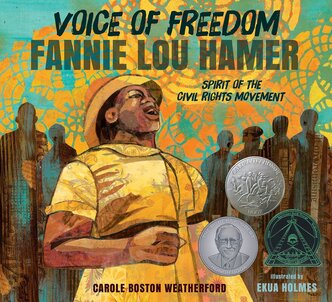
"All my life I've been sick and tired. Now I'm sick and tired of being sick and tired."-Fannie Lou Hamer |
Throughout Voice of Freedom, Weatherford’s poetry illustrates how Hamer’s stirring speeches, matter-of-fact testimonials, and her penchant for singing spirituals served as rallying cries for freedom and justice. Her roles as leader, mobilizer, organizer, political candidate, and advocate for social, financial and educational programming for Black communities further contributed to her identification as the “spirit of the civil rights movement.” Holmes’ vibrant, textured collages, often “based on or inspired by photographs” (Weatherford, 2015, unpaged back matter), enhance the verbal juxtapositions of humanity and horror, and pay homage to Hamer’s resilience, compassion, and commitment to justice.
|
|
Using the Investigate, Explore, and Create Model of the Biography Clearinghouse, we offer teaching ideas focused on the art and science of conveying “emotional weight” and “factual burdens” (interview transcript, p.9) in biographies written in verse. Generating a sense of intimacy punctuated by emotional overtones of hardship and resilience, using first person point of view, pairing and alternating verse and prosaic text, and helping cultivate reader empathy are discussed.
|
CURRENT BOOK ENTRYCONNECTED BOOK ENTRIES |
|
In our desire to honor and reflect Weatherford’s commitment to “mine the past for family stories, fading traditions, and forgotten struggles” (transcript, p.11), we provide a variety of multimedia resources for critical explorations of the past and present regarding:
|
Below we feature one of two time-gradated teaching recommendations included in the Create section of the Voice of Freedom book entry.
Youth As Agents of Change in Local Communities
If you have 1-2 hours... |
If you have 1-2 days... |
If you have 1-2 weeks... |
Using Voice of Freedom, discuss with students how Fannie Lou Hamer was a voice of change for voting rights and Black female political representation during the Civil Rights Movement. Introduce Amanda Gorman, the First Youth Poet Laureate of the United States, to students. As a class, watch Gorman’s reading of her 2021 presidential inauguration poem, "The Hill We Climb." Ask students what message they think Gorman is conveying through her poem. Use the full-text version of "The Hill We Climb Text" for students’ exploration of Gorman’s words. Discuss how Gorman uses her voice to effect change on issues such as civil rights and feminism. Begin an Agents of Change T- chart, using the headings, “Activist” and “Cause.” Ask students what issues Amanda Gorman might be advocating for in “The Hill We Climb.” Ask them about other causes they know about to include on the chart. |
Revisit the concept of "agents of change," using the previously completed T-Chart. Watch one or both of the following videos featuring youth activists focused on environmental issues: Continue to add to the existing T-Chart or create a new chart. Engage in discussions about the choices Genesis and Mari are making, how these affect their communities, and why this classifies them as agents of change. Below are other young activists that you can include in your inquiry:
See the book entry for additional possibilities. |
Discuss the importance of youth activism in tandem with Secondlineblog.org. Have students identify local youth activists or organizations in their area whom they see as a voice of change. Consider using Global Citizen for inspiration. Have students create interview questions for the local youth activist or organization they selected. Students can conduct, record, and interview individuals through Zoom, Teams, Google Meet, or other digital platforms. Using their interview recordings as a resource, ask students to create a multimodal presentation on the group or individual. Using Voice of Freedom, “The Hill We Climb,” or the other texts included in these ideas as mentor texts, encourage students to describe the group or individual’s advocacy work in their presentations and include why this makes them agents of change. See the book entry for additional activities. |
Joyce Balcos Butler is a fifth-grade teacher in Winder, Georgia, where she focuses on implementing social justice learning through content areas. She is a National Writing Project Teacher Consultant, a Red Clay Writing Fellow at the University of Georgia, and a member of CLA.
BY MARY ANN CAPPIELLO on behalf of The Biography Clearinghouse
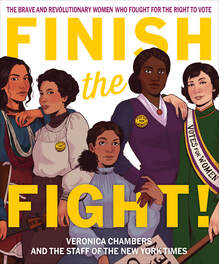
COVID-19 continues to wreak havoc on our lives, our health. We bear witness to the disproportionate impact of COVID-19 on minoritized groups, including Black and Latinx communities, Native Americans, and the elderly.
Across America, Black Lives Matter protests carry on, demanding that our nation invest in the essential work necessary to achieve a more perfect union through racial justice.
In 2020, we remember moments of historic change, commemorating the 30th anniversary of the Americans with Disabilities Act and the 100th anniversary of the 19th Amendment.
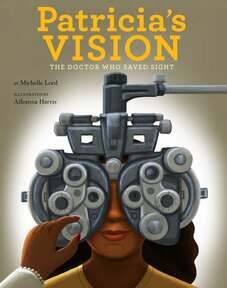
How do you meet the needs of students and the needs of this moment in history? How do you find hope in literature?
Perhaps one way is to turn to the people of the past and the present who are working on the edges of scientific knowledge. Or, to turn to the people of the past and the present who have acted as champions of social justice. Their life stories offer young people models of agency and action, blueprints for change.
To that end, The Biography Clearinghouse shares 20 biographies for 2020, a list of recent picturebook and collected biographies to connect with the challenges of the moment. This list is not comprehensive. It is simply a starting place. We hope these recently published biographies of diverse changemakers can become part of your curriculum or part of your read aloud calendar, in-person or over video conferencing software.
Biographies About Scientists
Biographies About Champions for Change
|
All the Way to the Top: How One Girl’s Fight for Americans with Disabilities Changed Everything (2020) by Annette Bay Pimental, illustrated by Nabi H. Ali
Althea Gibson: The Story of Tennis’ Fleet-Footed Girl (2020) by Megan Reid, illustrated by Laura Freeman Finish the Fight: The Brave and Revolutionary Women Who Fought for the Right to Vote (2020) by Veronica Chambers and the staff of The New York Times, illustrated by Monica Ahanonu, Rachelle Baker, Kristen Buchholz, Alex Cabal, Noa Denmon, Ellen Duda, Shyama Golden, Johnalynn Holland, Hillary Kempenich, Nhung Lê , Ella Trujillo, and Steffi Walthall I am Not a Label: 34 Disabled Artists, Thinkers, Athletes and Activists from Past and Present (2020) by Cerrie Burnell, illustrated by Lauren Mark Baldo Lifting as We Climb: Black Women’s Battle for the Ballot Box (2020) by Evette Dion Lizzie Demands a Seat! Elizabeth Jennings Fights for Streetcar Rights (2020) by Beth Anderson, illustrated by E.B. Lewis She was the First! The Trailblazing Life of Shirley Chisholm (2020) by Katheryn Russell-Brown, illustrated by Eric Velasquez Soldier for Equality: José de la Luz Sáenz and The Great War (2019) by Duncan Tonatiuh Spotted Tail (2019) by David Heska Wanbli Weiden, illustrated by Jim Yellowhawk and Pat Kinsella The Teachers March: How Selma’s Teachers Changed History (2020) by Sandra Neil Wallace and Rick Wallace, illustrated by Charly Palmer |
Authors:
CLA Members
Supporting PreK-12 and university teachers as they share children’s literature with their students in all classroom contexts.
The opinions and ideas posted in the individual entries are those of the individual authors and do not necessarily reflect the opinions or views of CLA or the Blog Editors.
Blog Editors
contribute to the blog
If you are a current CLA member and you would like to contribute a post to the CLA Blog, please read the Instructions to Authors and email co-editor Liz Thackeray Nelson with your idea.
Archives
May 2024
April 2024
March 2024
February 2024
January 2024
December 2023
November 2023
October 2023
September 2023
August 2023
May 2023
April 2023
March 2023
December 2022
November 2022
October 2022
September 2022
August 2022
June 2022
May 2022
April 2022
March 2022
February 2022
January 2022
December 2021
November 2021
October 2021
September 2021
August 2021
June 2021
May 2021
April 2021
March 2021
February 2021
January 2021
December 2020
November 2020
October 2020
September 2020
August 2020
June 2020
May 2020
April 2020
March 2020
Categories
All
Activism
Advocacy
African American Literature
Agency
All Grades
American Indian
Antiracism
Art
Asian American
Authors
Award Books
Awards
Back To School
Barbara Kiefer
Biography
Black Culture
Black Freedom Movement
Bonnie Campbell Hill Award
Book Bans
Book Challenges
Book Discussion Guides
Censorship
Chapter Books
Children's Literature
Civil Rights Movement
CLA Auction
CLA Breakfast
CLA Expert Class
Classroom Ideas
Collaboration
Comprehension Strategies
Contemporary Realistic Fiction
COVID
Creativity
Creativity Sponsors
Critical Literacy
Crossover Literature
Cultural Relevance
Culture
Current Events
Digital Literacy
Disciplinary Literacy
Distance Learning
Diverse Books
Diversity
Early Chapter Books
Emergent Bilinguals
Endowment
Family Literacy
First Week Books
First Week Of School
Garden
Global Children’s And Adolescent Literature
Global Children’s And Adolescent Literature
Global Literature
Graduate
Graduate School
Graphic Novel
High School
Historical Fiction
Holocaust
Identity
Illustrators
Indigenous
Indigenous Stories
Innovators
Intercultural Understanding
Intermediate Grades
International Children's Literature
Journal Of Children's Literature
Language Arts
Language Learners
LCBTQ+ Books
Librarians
Literacy Leadership
#MeToo Movement
Middle Grade Literature
Middle Grades
Middle School
Mindfulness
Multiliteracies
Museum
Native Americans
Nature
NCBLA List
NCTE
NCTE 2023
Neurodiversity
Nonfiction Books
Notables
Nurturing Lifelong Readers
Outside
#OwnVoices
Picturebooks
Picture Books
Poetic Picturebooks
Poetry
Preschool
Primary Grades
Primary Sources
Professional Resources
Reading Engagement
Research
Science
Science Fiction
Self-selected Texts
Small Publishers And Imprints
Social Justice
Social Media
Social Studies
Sports Books
STEAM
STEM
Storytelling
Summer Camps
Summer Programs
Teacher
Teaching Reading
Teaching Resources
Teaching Writing
Text Sets
The Arts
Tradition
Translanguaging
Trauma
Tribute
Ukraine
Undergraduate
Using Technology
Verse Novels
Virtual Library
Vivian Yenika-Agbaw Student Conference Grant
Vocabulary
War
#WeNeedDiverseBooks
YA Lit
Young Adult Literature

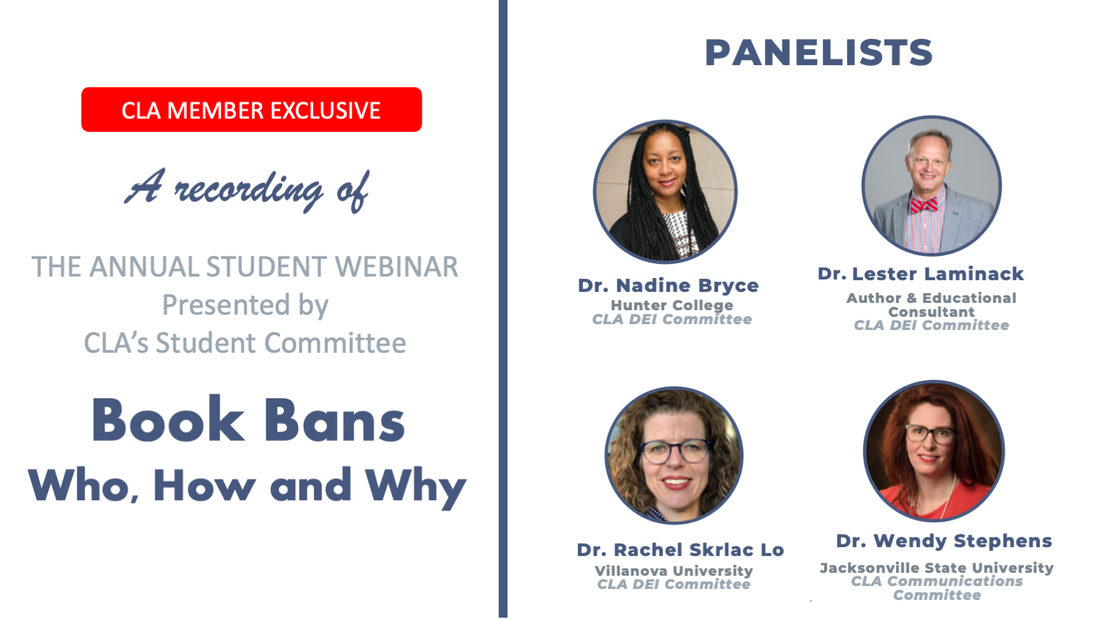
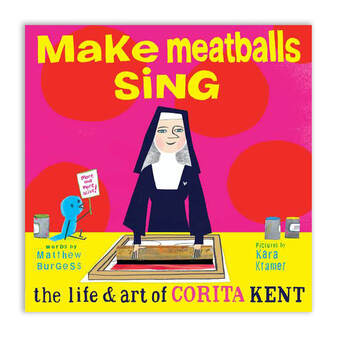

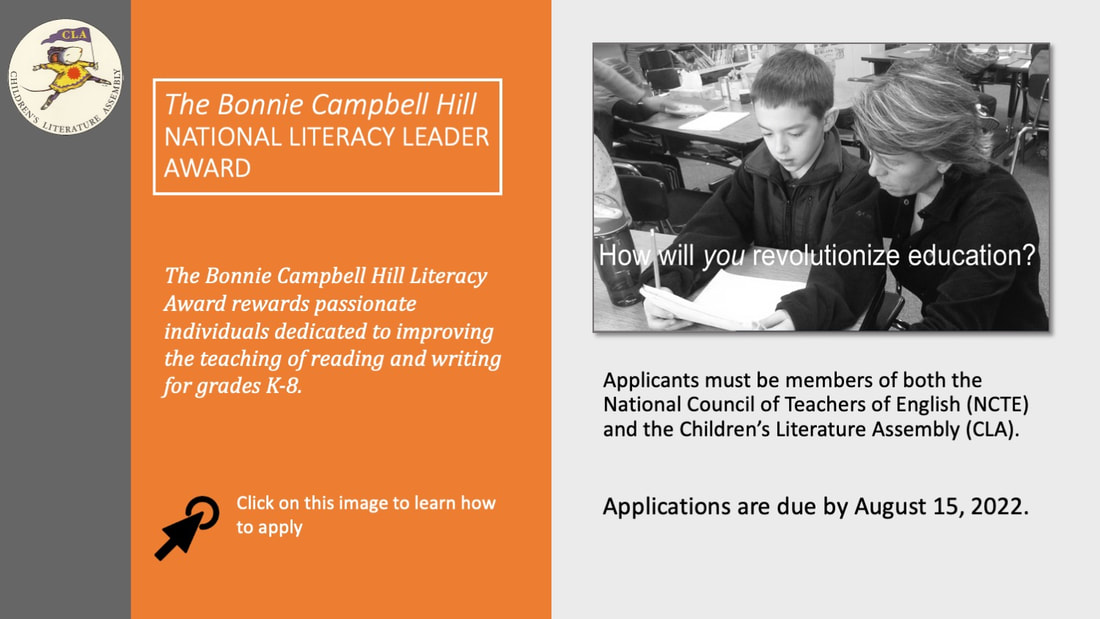
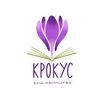


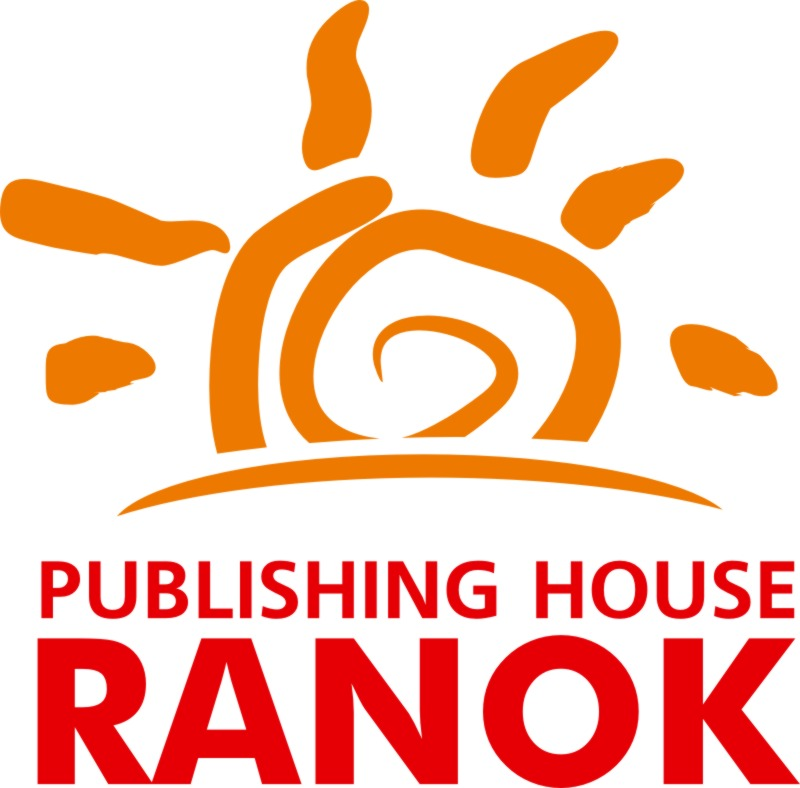


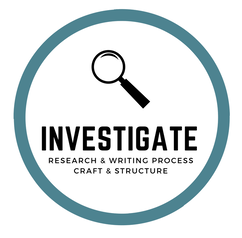
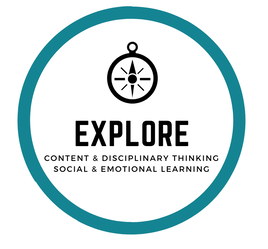
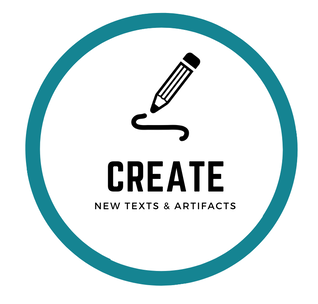

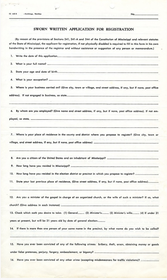
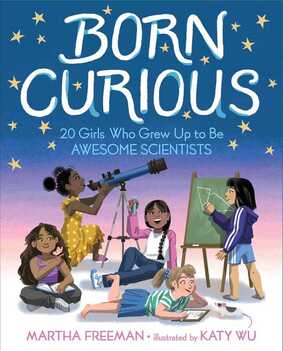
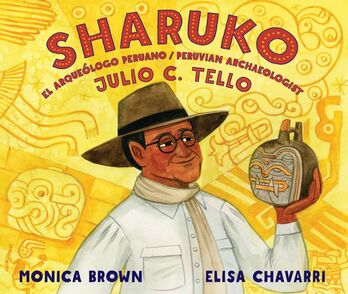
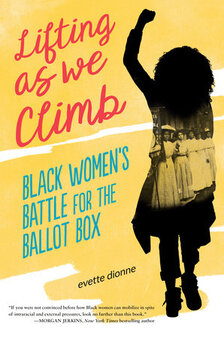
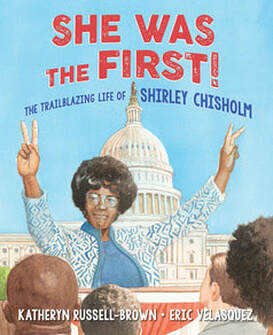
 RSS Feed
RSS Feed